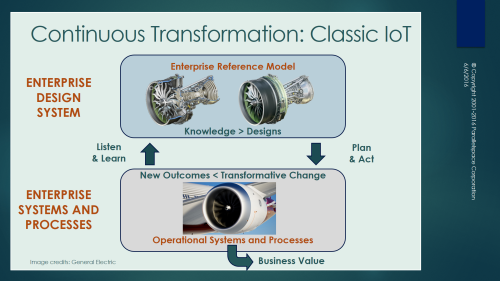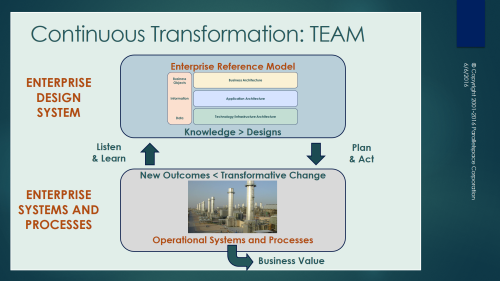Original title: What are the differences between improving the design (and operation) of a smart city, an aircraft engine, a muscle car, a large enterprise, and/or an integrated commercial global cloud services platform …running at hyperscale?
COPYRIGHT © 2016-2024 by Michael Herman. All rights reserved. [Updated May 14, 2024]
Question: What are the differences between improving the design (and operation) of:
- a smart city,
- an aircraft engine,
- a muscle car,
- a large enterprise, and/or
- an econonic system
- …running at hyperscale?
Answer: None.
Scroll down to see the use cases; then the list of resources at the bottom of this article.
Use Case 1: Aircraft engine
Use Case 2: Muscle car

Figure 1. Continuous Transformation Model: Aircraft Engines and Muscle Cars
Use Case 3: Smart city
Use Case 4: Large enterprise operating at hyperscale
Figure 2. Continuous Transformation Model: Smart Cities, Large Enterprises, and Cloud Services Platforms
Use Case 5: Economic systems
Figure 3. Continuous Improvement Framework applied to Economic Systems
Diving Deeper: #Graphitization
To go deeper, checkout #Graphitization of the Enterprise (click here) as well as the list of references below.
Figure 4. #Graphitization Continuous Transformation Model
Figure 5. Continuous Transformation Framework: Process Model
References
- Michael Herman, Blockchain Developer, Enterprise Architect and Data Scientist: #Graphitization Inventor (click here)
- Continuous Transformation and Transformative Change are key principles of the Total Enterprise Architecture Model (TEAM) (click here)
- To dig deeper, check out Graphitization of the Enterprise (click here)
- [Enterprise Architecture, Big Data, CRM, ERP, …] Tools and Methods Don’t Generate Business Value (click here)
Best regards,
Michael Herman
Enterprise Architect and Data Scientist
E: mwherman@parallelspace.net
B: http://hyperonomy.com
L: https://www.linkedin.com/in/mwherman/recent-activity/posts/
Living at the intersection of Enterprise Architecture, Enterprise Knowledge, and Data Science





Pingback: Michael Herman: Inventor of #Graphitization | hyperonomy.com - digital intelligence